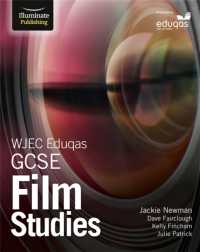Full Description
This student-centered textbook provides proven tips and innovative methods for teaching, managing, and assessing all aspects of art instruction and student learning in today's diversified Pre-K-12 educational settings. This second edition introduces an original transformative art education framework to guide teaching and learning through culturally-responsive practices, supported by multimodal art inquiry tasks, artistic behaviors, and engaging instructional resources. Esteeming teacher and student agency, its framework cultivates insightful transformations by harnessing the visual arts' unique strengths to deepen understandings, promote growth, and foster empathy, thereby enhancing personal, group, and community well-being. New to this edition is an increased focus on transdisciplinary teaching and science, technology, engineering, arts, and mathematics (STEAM) integration, how to discuss controversial or divisive topics, and contemporary impacts that affect classroom management for art educators
Featuring full-color images, chapters include Teaching Tips to Thrive! and Artists' Lessons to Thrive! vignettes, written by education professionals about their instructional methods, as well as Spotlights on Student Art describing exemplary Pre-K-12 artworks. Ideal for preservice art teachers and any educator seeking to holistically integrate visual arts into their curriculum and instruction, this popular text helps challenge and inspire students to think creatively, problem-solve, and develop relevant skills as lifelong learners. To enhance learning, ready-to-use presentations, instructional resources, assessments, and tutorials are also available on the textbook's website: routledgelearning.com/teachlearnarted.
Contents
Part 1: Art Education: Thriving in Teaching and Learning 1. Teaching and Learning in Art Education: An Overview 2. The Transformative Art Curriculum 3. Assessment and Evaluation for the Visual Arts 4. Classroom Management in the Visual Arts Part 2: Student Learners 5. Artistic Development: Early Childhood Through Adolescence 6. Diversified Learners Part 3: Multimodal Art Inquiry and Creation 7. Multimodal Art Inquiry and Creation: Teaching What Truly Matters 8. Transforming Aesthetic Perspectives 9. Critiquing Global Visual and Popular Culture 10. Transformative Art Histories and Cultural Traditions Part 4: Multimodal Creative Practices 11. Drawing and Illustration 12. Painting 13. Paper Arts, Printmaking, and Book Arts 14. Sculpture 15. Clay and Mosaics 16. Textiles and Puppets 17. Environmental Design 18. Media Arts Part 5: Making the Most of Your Teaching Career 19. Arts Advocacy 20. Making the Most of Your Teaching Career






